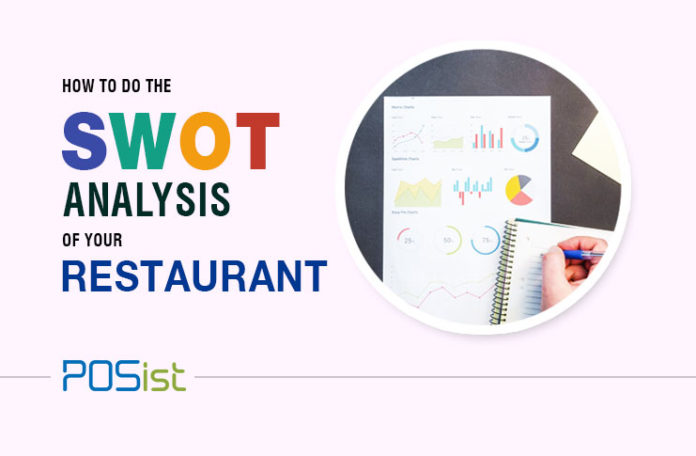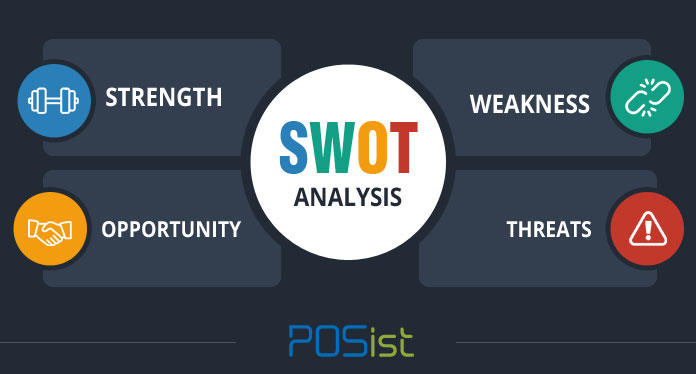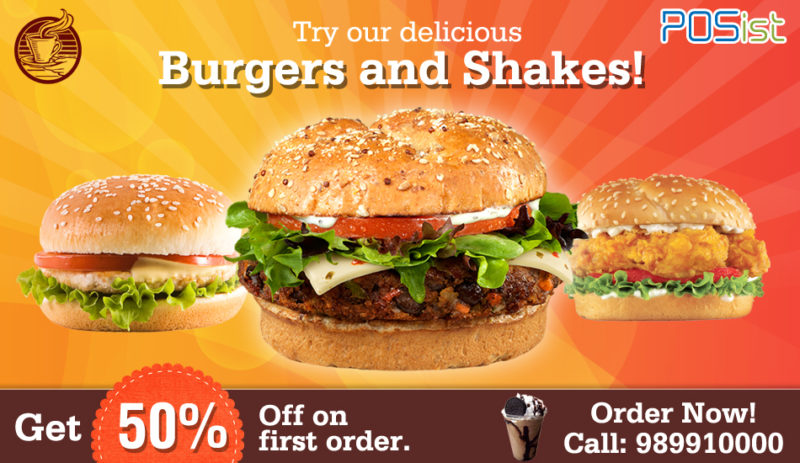Creating a business plan for your restaurant is essential. It helps you plan and gives you insights to run your business better. One of the critical components of your restaurant business plan is the SWOT Analysis. A SWOT Analysis is primarily identifying the Strengths (S), Weaknesses (W), Opportunities (O), and the Threats (T) of the restaurant that you can use to plan your business strategies. A SWOT analysis is usually represented in the form of a two by two graph, with Strengths in the top left side, Weaknesses in the top right side, Opportunities in the bottom left side, and Threats in the bottom right side.
The Need For SWOT Analysis In A Restaurant Business Plan
A SWOT analysis must always be included in your restaurant business plan as it helps you analyze your current situation, and prepares you for what lies ahead. Create a restaurant strategy following the SWOT Analysis. You should use your strengths to take advantage of the opportunities at hand and work to eliminate the weaknesses of your restaurant to avoid potential threats. The ultimate aim of including a SWOT analysis in your restaurant business plan is to be self-aware of all the advantages and disadvantages of the business.
How To Do A SWOT Analysis For Your Restaurant
Doing a proper SWOT analysis is critical to the success of your restaurant. In this article, we will help you do the SWOT analysis of your restaurant the right way.
1. Strengths
The first thing that is usually mentioned in the SWOT analysis is the strengths of your restaurant business that are a result of the internal factors. These are the advantages your business has over other restaurants and give you an edge. While writing down the strengths in your SWOT analysis, list down all the positive attributes of your restaurant. These are the factors that would help you generate revenue.
For instance, these can be innovative menu items that are unique to your restaurant, or perhaps a location that gets a high footfall. You could use your restaurant POS to ensure that you make maximum profits.
2. Weaknesses
No matter how well equipped you are to open a restaurant, and you are bound to have a few weaknesses that are inherent to your business. Instead of living in denial, it is better to identify them and work to improve them. SWOT analysis comes in handy in these situations.
Your weaknesses are the areas where you are at a disadvantage, have something missing, or is costing you undue money and making you lose out on profits. This could be anything; from having an inexperienced staff to having a limited marketing budget. Even if the weaknesses are not in your control, you can instead work to compensate for them.
3. Opportunities
Opportunities are the areas where you see real potential in the restaurant business and drive more profits. You can identify the opportunities by looking at the actual possibilities that can increase your restaurant sales. These could be possible trends that you can catch on early and harness them to attract customers. For instance, there could be an upcoming shopping complex near your restaurant that would further get high footfalls.
4. Threats
Threats are those external factors that can potentially hamper your restaurant business. You generally do not have control over these factors; however, they must still be very much included in your restaurant business plan as they prepare you for unforeseen circumstances.
There is a risk involved in all types of businesses, and the same is the case with a restaurant. Hence, you should try to identify the factors that are posing a threat to your business. The most common risk in the restaurant business is the high competition in the market. There can be other possible threats as well, such as a rise in the price of raw materials, or an increase in your property rent.
Examples of Strengths, Threats, Weaknesses, and Opportunities
Strengths include:
- Unique menu items such as food or cocktail made of exotic ingredients
- High quality menu
- Value-for-money pricing
- Great customer service that helps in building brand loyalty
- Premium location on a high street or close to a subway stop
- Pretty decor and ambience
Weaknesses include:
- Limited menu options for vegans/vegetarians
- Poor customer service, especially by being unaccommodating to customer’s needs
- Long waiting times for tables or for food
- Poor hygiene practices
- Prohibitively high prices with small portion sizes
- Poor digital marketing campaigns
Opportunities include:
Your weaknesses are your opportunities.
- Embrace the new food trends if they are in line with your customer demands, for e.g., gluten-free food, vegan food items, or any food item going viral on TikTok, etc.
- Provisions for online ordering
- Offering special offers, like happy hours, ladies night, holiday promotions etc.
- Tie up with a food influencer for more brand awareness
- Location expansion and Franchising
Threats include:
- New restaurants in your neighborhood selling similar cuisines
- Rise in home delivery options
- Increase in costs like rentals, kitchen equipment etc.
- Better marketing campaigns undertaken by competitors
- Vendors/suppliers going bust or offering uncompetitive pricing
- Shutting of business over economic downturns/pandemics/wars/natural hazards, etc.
Sample Restaurant SWOT Analysis
Still unclear? Here’s what a sample SWOT analysis would look like for a restaurant. Assume you are the owner of a restaurant that sells Asian food, but you have adapted it to the local palate, thus having plenty of fusion food items.
In this scenario, your SWOT analysis could look something like the following:
STRENGTHS
|
WEAKNESSES
|
OPPORTUNITIES
|
THREATS
|
Such a SWOT analysis can be done every 4-6 months in order to keep abreast of the changes in your local environment. The data from your restaurant management software can further be leveraged for an enhanced understanding of your restaurant’s strengths and limitations.
By properly analyzing all the Strengths, Weaknesses, Opportunities, and Threats that can impact your business, you can prepare yourself better to run your restaurant business and make it a raging success!



















Comment:good post,very useful
Most people opening a restaurant for the first time dont do the SWOT analysis, which is a big mistake. Creating a business plan, doing an industry analysis and the SWOT analysis is important as it would help you foresee your plans and prepare you for the challenges.
All the points mentioned in this article are very useful and must be done while doing the SWOT analysis of restaurant.
When it comes to starting a new business, one of the areas that will help entrepreneurs position their business in such a way that the trade will break even within the shortest time frame is to conduct SWOT analysis before proceeding to launch the business. The article explains all of it in detail about SWOT analysis. Great Work, the points are very helpful.
SWOT analysis is definitely good for a restaurant’s success but it is equally important to know what SWOT analysis is for restaurants.
This is great article that answers both